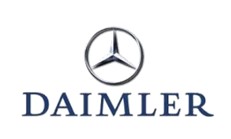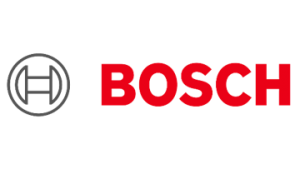The Project
During 2018 vehicle accidents on European roads took the life of 26,000 people (increased in comparison to the previous year), and caused serious injuries to other 135,000 people, which had an estimated direct social cost (rehabilitation, healthcare, material damages, etc.) of at least €100 billion. It is estimated that human errors (mainly alcohol, high speed and distractions) account for 80-90% of total car accidents. This means that the vast majority of road deaths could have been avoided if the human factor was taken out of the equation.
The European Commission (EC) has adopted in June 2019 the Vision Zero and Safe System approach, to totally eliminate deaths and serious injuries on European roads by 2030. Still, the famous Tesla fatal-crash case involving a self-driving car demonstrated that vehicular automation is not enough to ensure the desired road safety. Due to this, autonomous driving together with connected vehicle technologies are being pushed forward to achieve the EC goal in medium and long term. Currently, the goals of future driving can no longer be understood nor achieved without Information and Communication Technology (ICT) and here the 5G Action Plan for Europe plays a fundamental role.
Although research in this field of science is looking into the societal needs in the medium term, the time has come for devising the kind of transport system we want for the future, that is to say, in 20 years’ time. This should be not only safer, but also more efficient in cost, time and energy consumption, where vehicles are mostly shared and autonomous driving allows making better use of our limited time. One fact is that Europe needs highly-skilled researchers-practitioners on the interface between automotive engineering and ICT. It is here where the novelty of the research programme fits in a European Industrial Doctorate (EID), to incorporate such highly qualified and multidisciplinary staff to the digital and automotive industries and strengthen these key industrial sectors.
Possibly, one of the biggest drawbacks of current vehicle development projects is that vehicles are still limited to ‘conventional sources of information’, such as laser scanners, on-board radars, sensors or cameras, which provide a limited knowledge of their environment to the drivers (either humans or in-car artificial intelligence), and relatively slow notification updates on traffic condition. Towards the next generation of connected vehicles and autonomous driving technologies, it is paramount to extend the drivers’ environment knowledge providing fast updated road information by means of highly reliable and efficient communications, robust decision-making, and privacy preserving information handling. Wireless communications must be better integrated in cars, e.g., designing proper antennas systems.
Indeed, the future communication needs of autonomous driving are far away from being satisfied with the technologies expected to come by 2021, including last Release 16 of NR for V2X, referred to as 5G V2X. Moreover, the needs for data rates in V2X communications are today foreseen in the order of 100 Mbps, but this capacity shall increase to be able to e.g. download on the fly highly automated driving maps or exchange the video recording from front cameras between cars to allow for assisted overtaking. In fact, the pressure to introduce new communication and autonomous driving capabilities in vehicles is turning the race towards 5G into a real odyssey for the European automotive industry. The problems derived from the coexistence of MIMO systems, a growing number of sensors and radars and C-ITS systems have not been solved precisely because the lack of personnel jointly specialized in communications and sensing technologies.
Objectives
Design an optimum multi-antenna deployment for enhanced performance of the new hyper connected car concept.
Integrate Cellular-assisted Vehicular to Anything (C-V2X) protocols, basically NR Release 16 on (Releases 17 and 18 according to 3GPP current time plan), with autonomous driving sensor systems.
Adapt signalling (RRC) and MAC protocols on IoT specific 5G NR chipsets.
Explore new hardware solutions for radar and SoC integration and configure the new design of the car electronics.
Expected Impact
ITN-5VC provides 396 person-months of high quality interdisciplinary and cross-sector research training for a new generation of scientists, who will benefit directly from the entrepreneurial and creative environment created by the network and deliver impact at a European level. It will produce a critical mass of highly-skilled professionals, who are advantaged by their international and inter-sector mobility. It will:
Develop EU capacity and skills to advance mmW antenna design, channel modelling, understanding of fundamental limits of 5G V2X and integration of communications with on-board car sensors in autonomous driving.
Integrate mmW antennas and 5G V2X communication systems to bring safety to a new dimension in the hyper connected car of the future.
Create a new concept of telematics unit that could simplify the electronics in the car.
Increase EU competitiveness in 5G/B5G V2X
Develop lasting academic and industry collaboration which ensures interdisciplinary and cross-sector research training programmes.
Create new and exciting career prospects for the fellows
Consortium & Structure

Technische Universitaet Ilmenau
Lead of WP2: Enabling technologies for advanced data comm. and coop. sensing
Key Persons: Prof Reiner S. Thomä and Christian Schneider
Partner Organizations
Bluetest

Daimler Mercedes

Fraunhofer IIS







